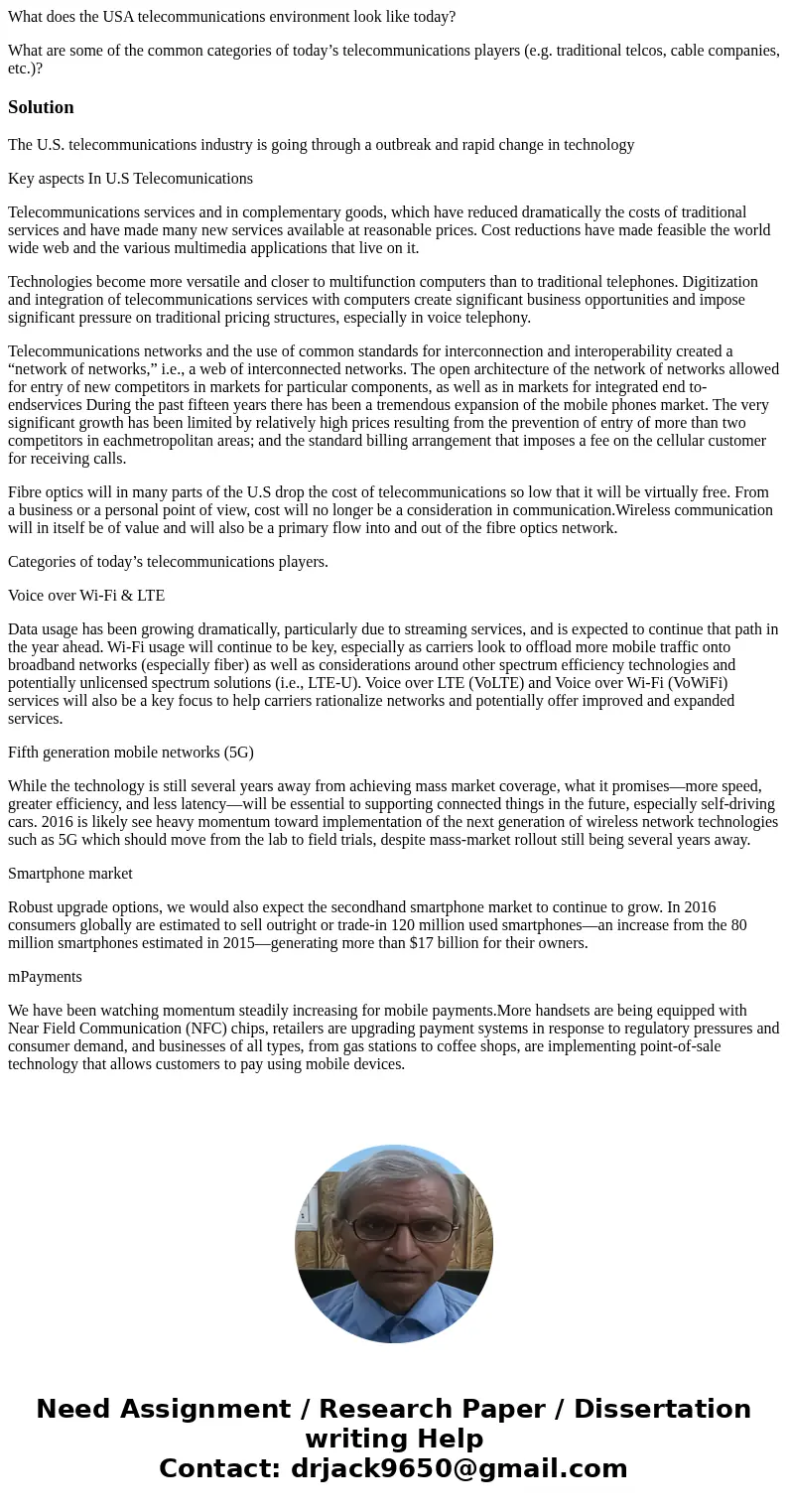What does the USA telecommunications environment look like t
What does the USA telecommunications environment look like today?
What are some of the common categories of today’s telecommunications players (e.g. traditional telcos, cable companies, etc.)?
Solution
The U.S. telecommunications industry is going through a outbreak and rapid change in technology
Key aspects In U.S Telecomunications
Telecommunications services and in complementary goods, which have reduced dramatically the costs of traditional services and have made many new services available at reasonable prices. Cost reductions have made feasible the world wide web and the various multimedia applications that live on it.
Technologies become more versatile and closer to multifunction computers than to traditional telephones. Digitization and integration of telecommunications services with computers create significant business opportunities and impose significant pressure on traditional pricing structures, especially in voice telephony.
Telecommunications networks and the use of common standards for interconnection and interoperability created a “network of networks,” i.e., a web of interconnected networks. The open architecture of the network of networks allowed for entry of new competitors in markets for particular components, as well as in markets for integrated end to-endservices During the past fifteen years there has been a tremendous expansion of the mobile phones market. The very significant growth has been limited by relatively high prices resulting from the prevention of entry of more than two competitors in eachmetropolitan areas; and the standard billing arrangement that imposes a fee on the cellular customer for receiving calls.
Fibre optics will in many parts of the U.S drop the cost of telecommunications so low that it will be virtually free. From a business or a personal point of view, cost will no longer be a consideration in communication.Wireless communication will in itself be of value and will also be a primary flow into and out of the fibre optics network.
Categories of today’s telecommunications players.
Voice over Wi-Fi & LTE
Data usage has been growing dramatically, particularly due to streaming services, and is expected to continue that path in the year ahead. Wi-Fi usage will continue to be key, especially as carriers look to offload more mobile traffic onto broadband networks (especially fiber) as well as considerations around other spectrum efficiency technologies and potentially unlicensed spectrum solutions (i.e., LTE-U). Voice over LTE (VoLTE) and Voice over Wi-Fi (VoWiFi) services will also be a key focus to help carriers rationalize networks and potentially offer improved and expanded services.
Fifth generation mobile networks (5G)
While the technology is still several years away from achieving mass market coverage, what it promises—more speed, greater efficiency, and less latency—will be essential to supporting connected things in the future, especially self-driving cars. 2016 is likely see heavy momentum toward implementation of the next generation of wireless network technologies such as 5G which should move from the lab to field trials, despite mass-market rollout still being several years away.
Smartphone market
Robust upgrade options, we would also expect the secondhand smartphone market to continue to grow. In 2016 consumers globally are estimated to sell outright or trade-in 120 million used smartphones—an increase from the 80 million smartphones estimated in 2015—generating more than $17 billion for their owners.
mPayments
We have been watching momentum steadily increasing for mobile payments.More handsets are being equipped with Near Field Communication (NFC) chips, retailers are upgrading payment systems in response to regulatory pressures and consumer demand, and businesses of all types, from gas stations to coffee shops, are implementing point-of-sale technology that allows customers to pay using mobile devices.

 Homework Sourse
Homework Sourse